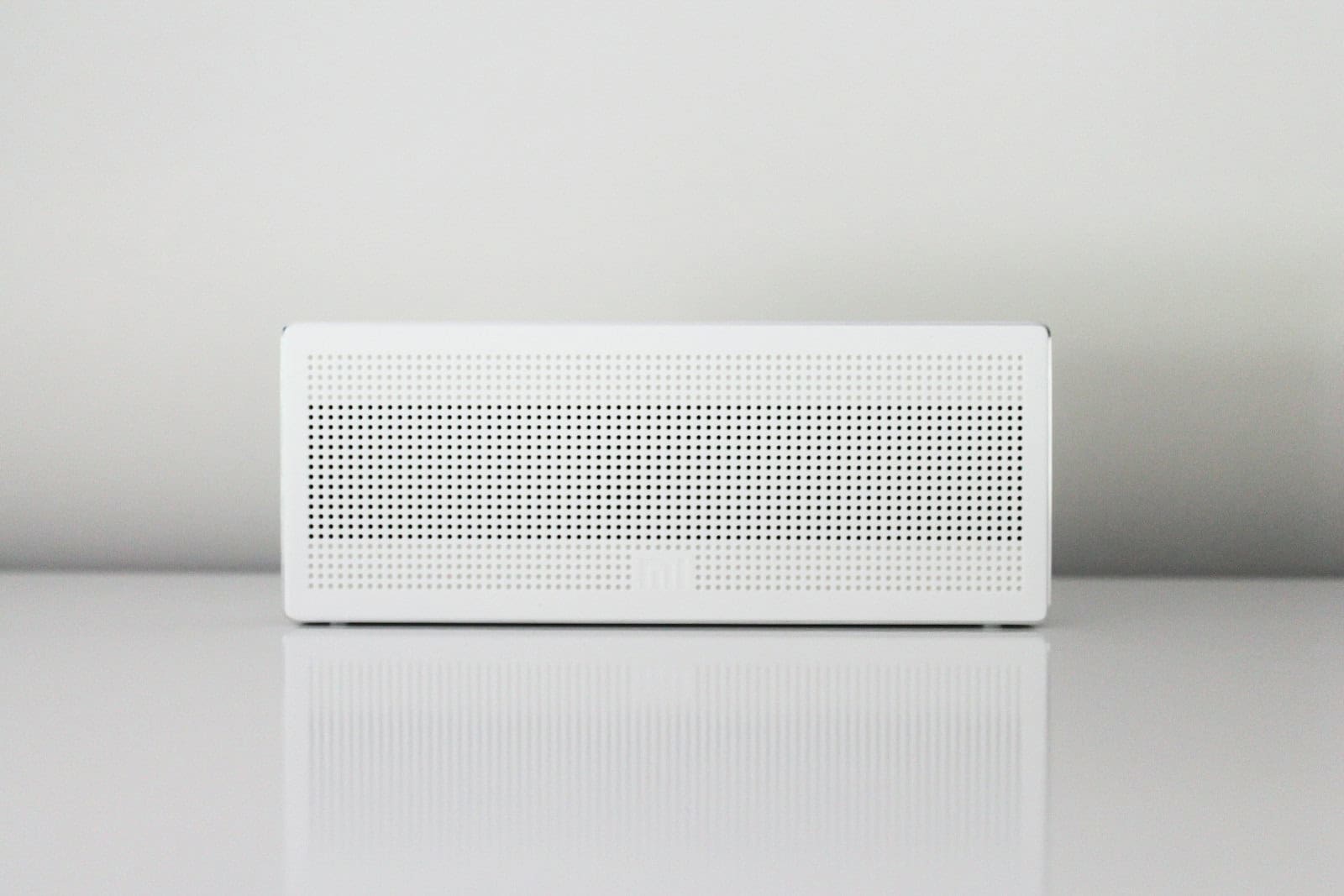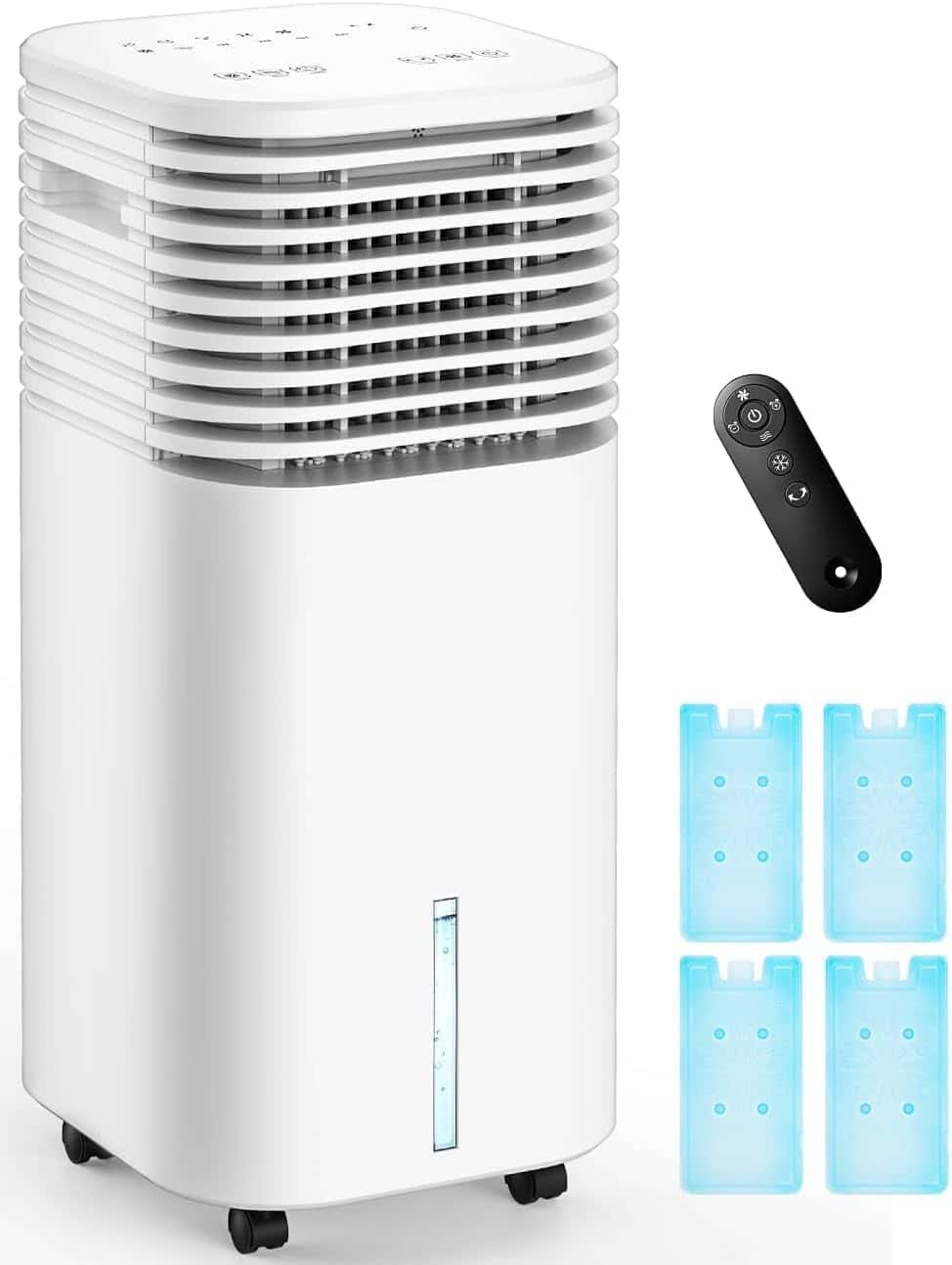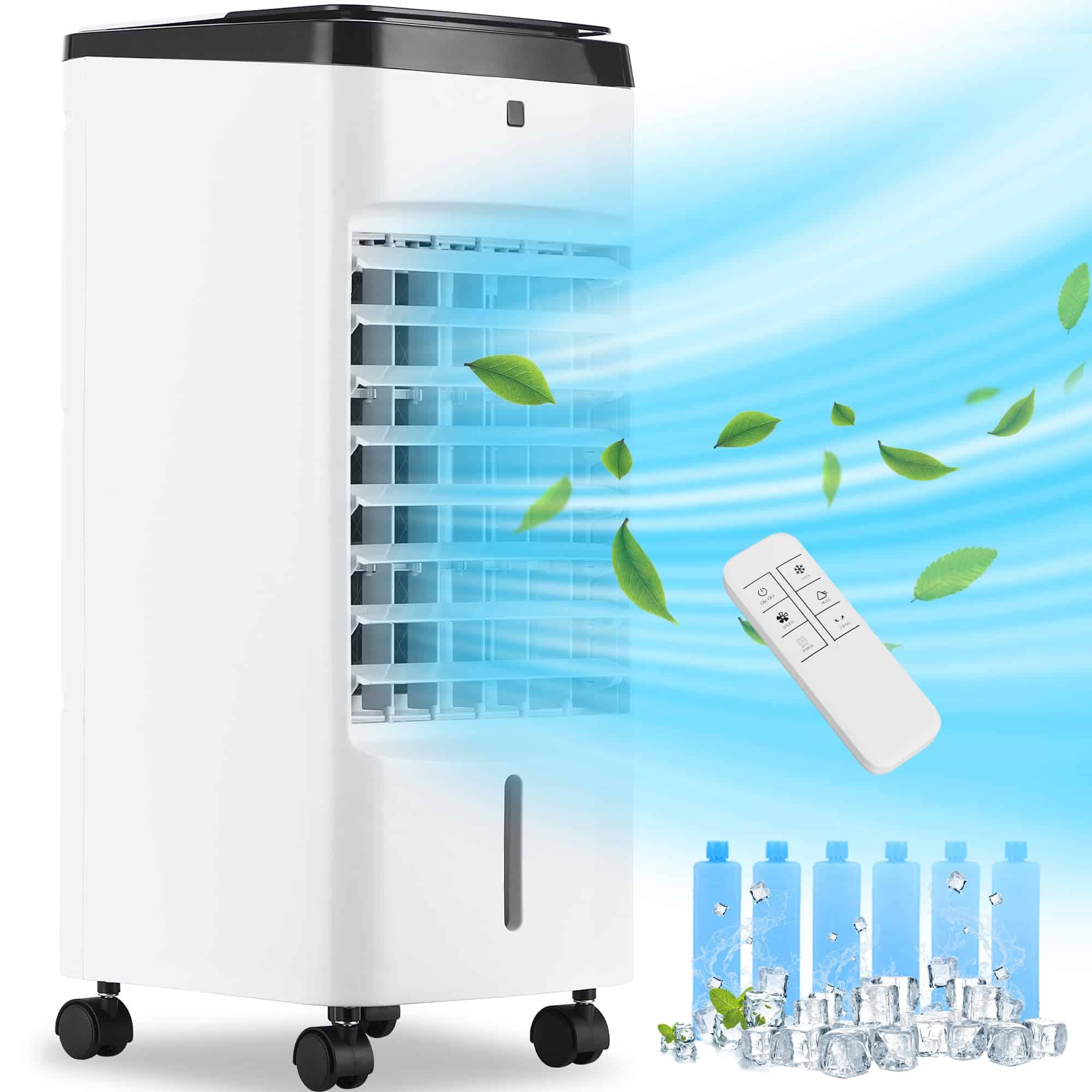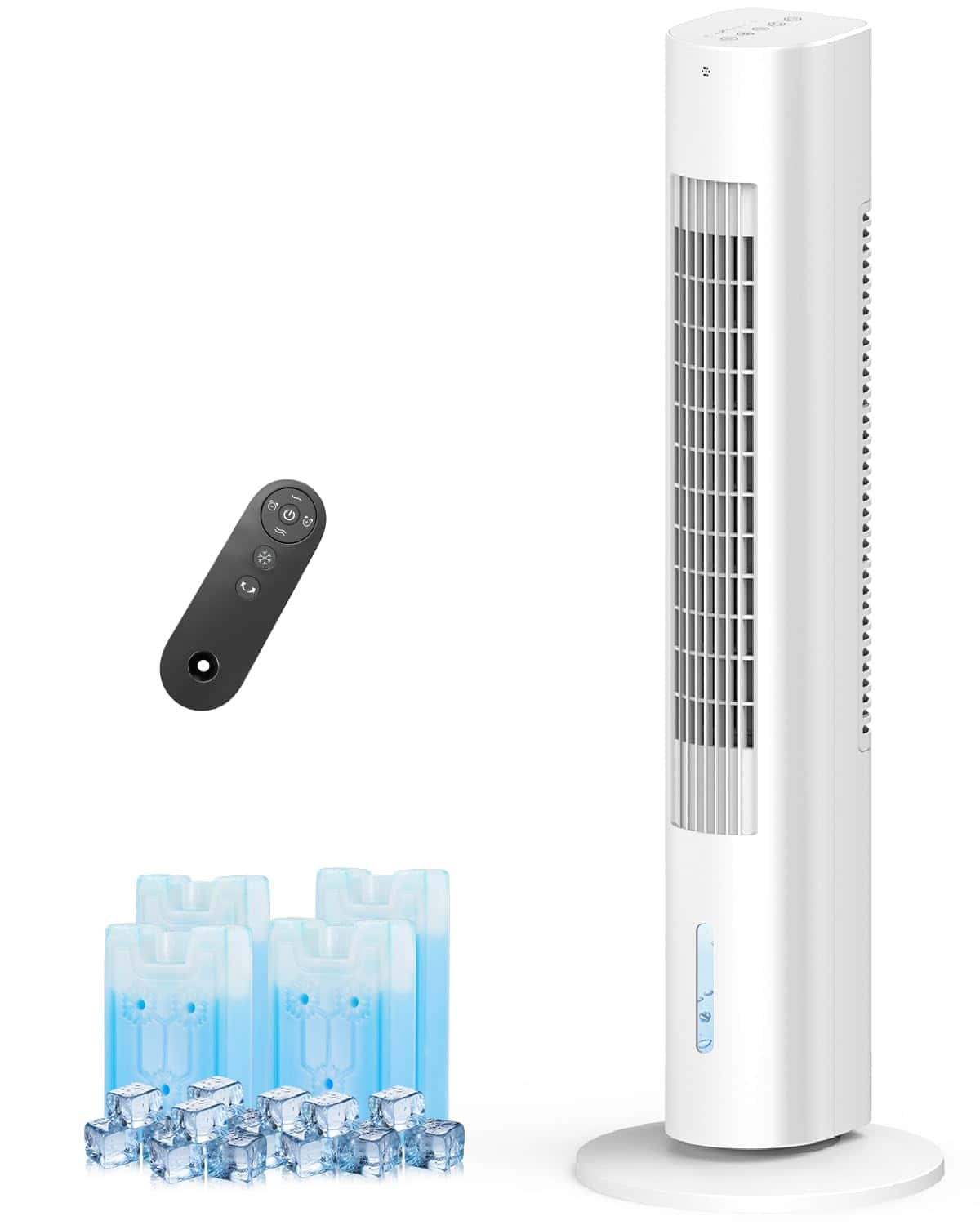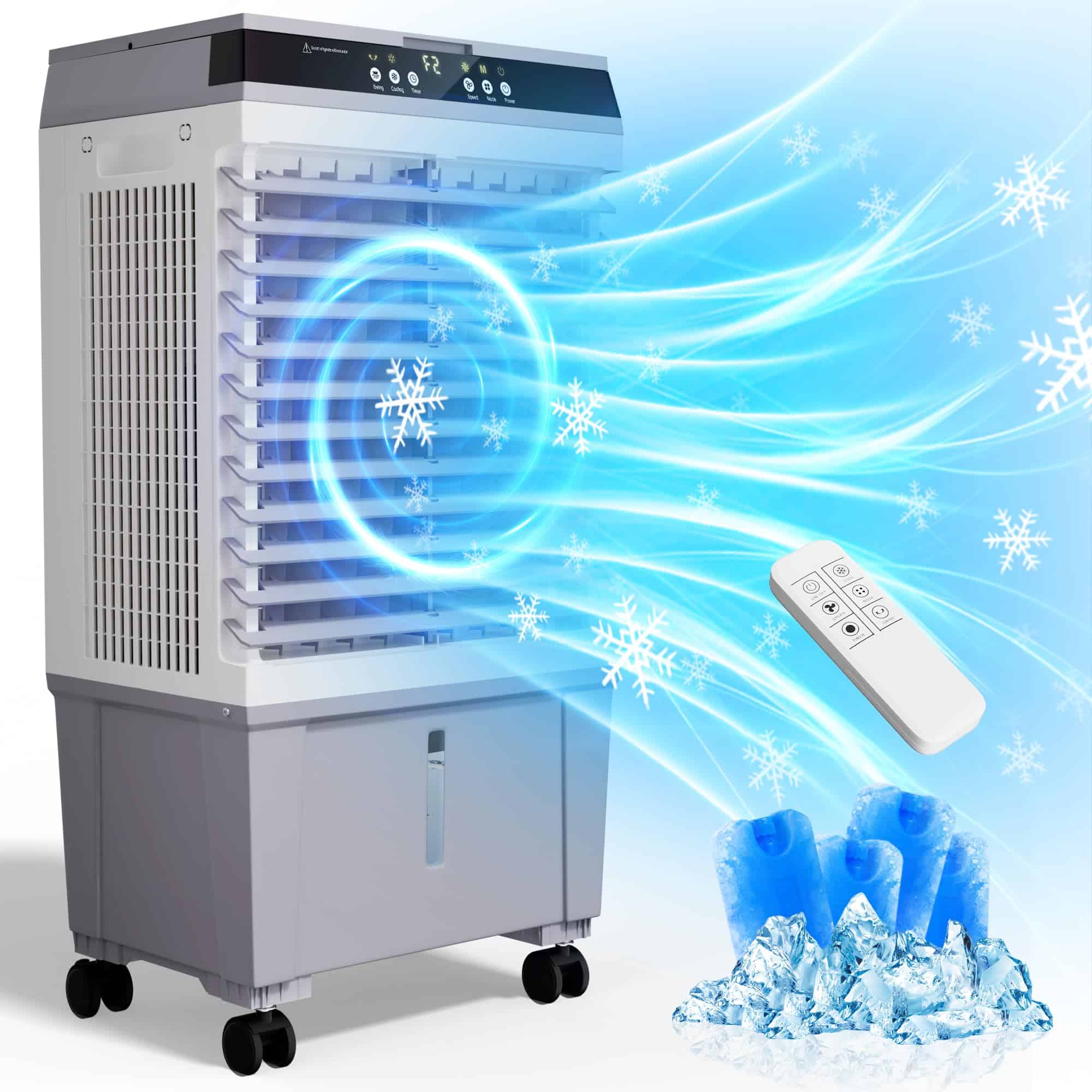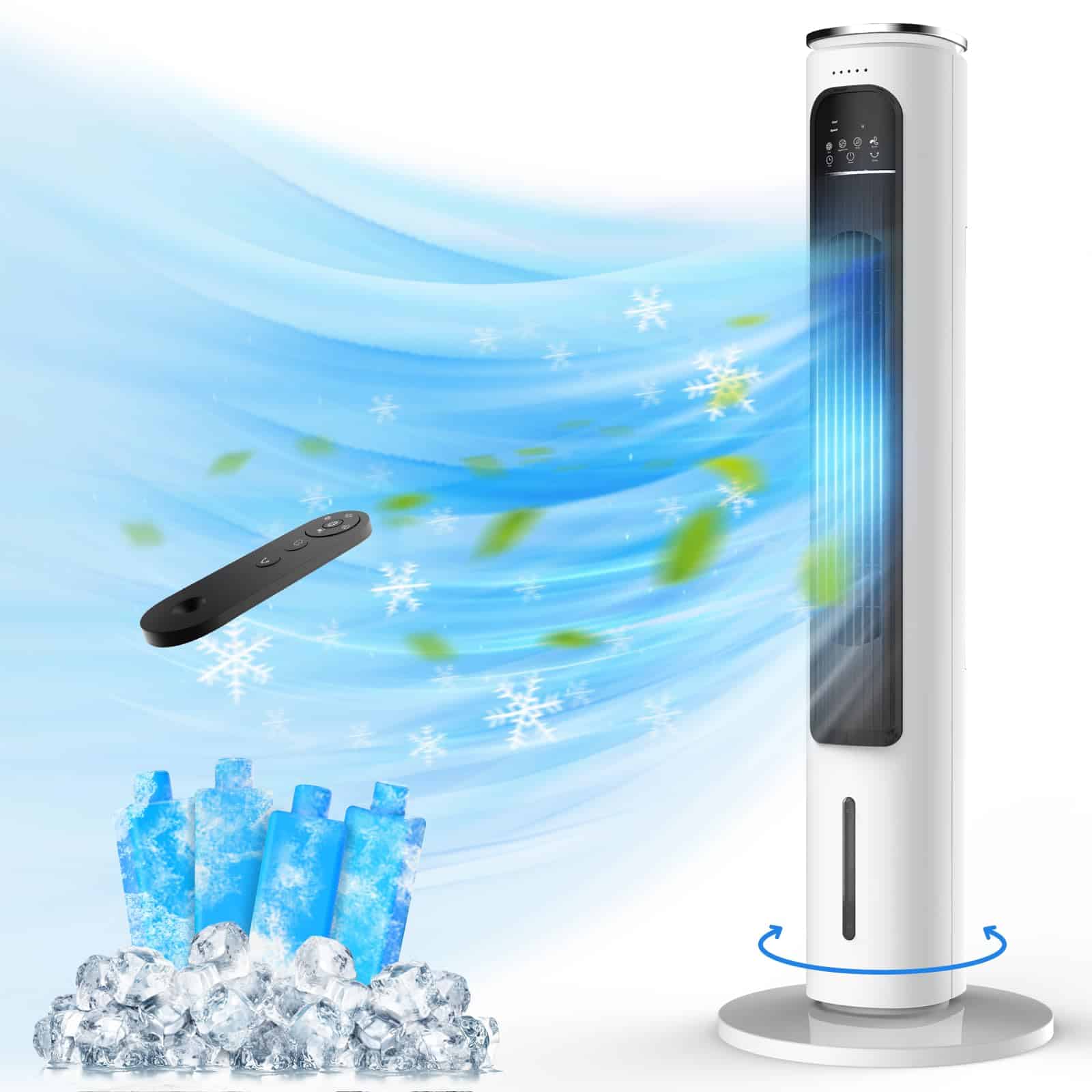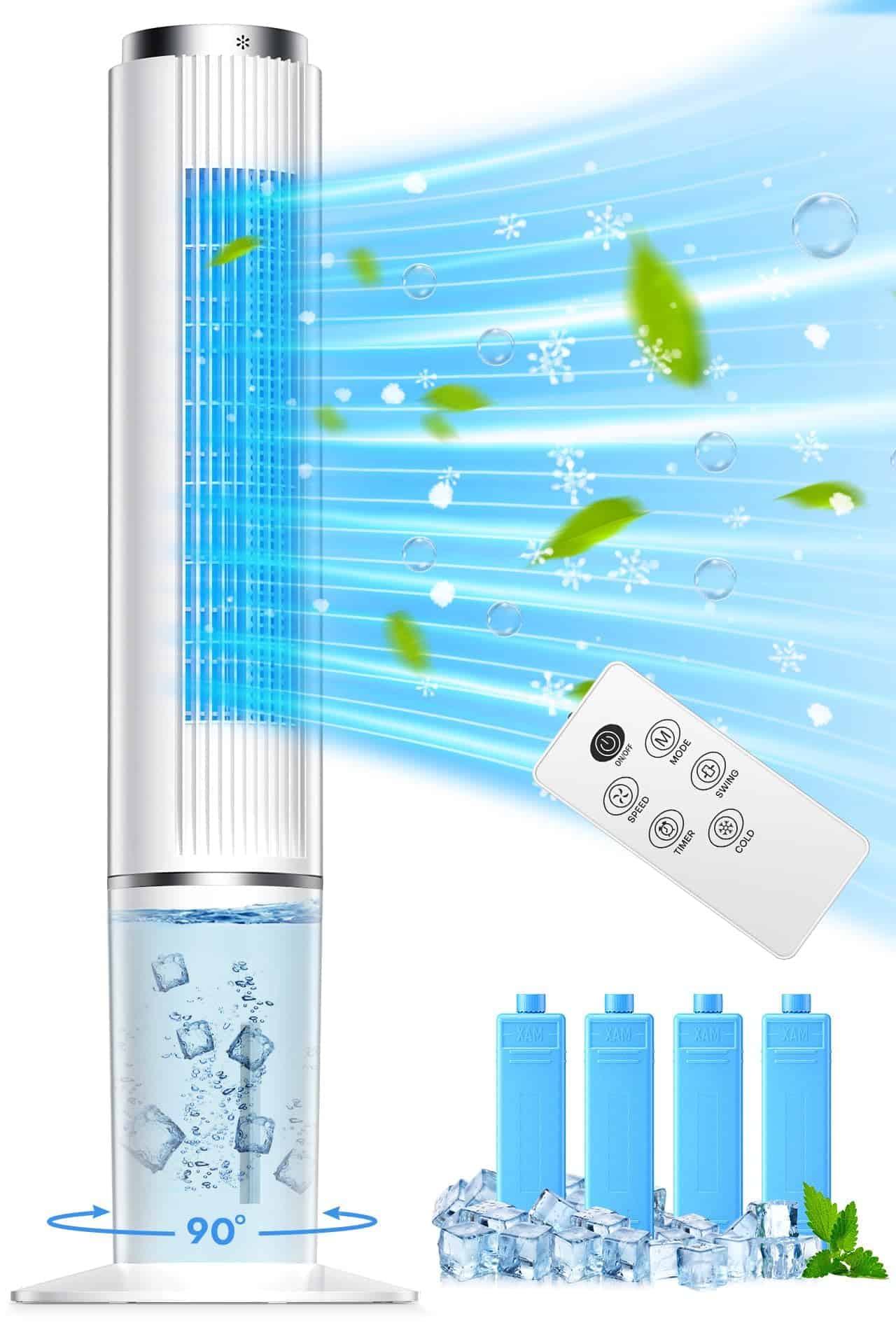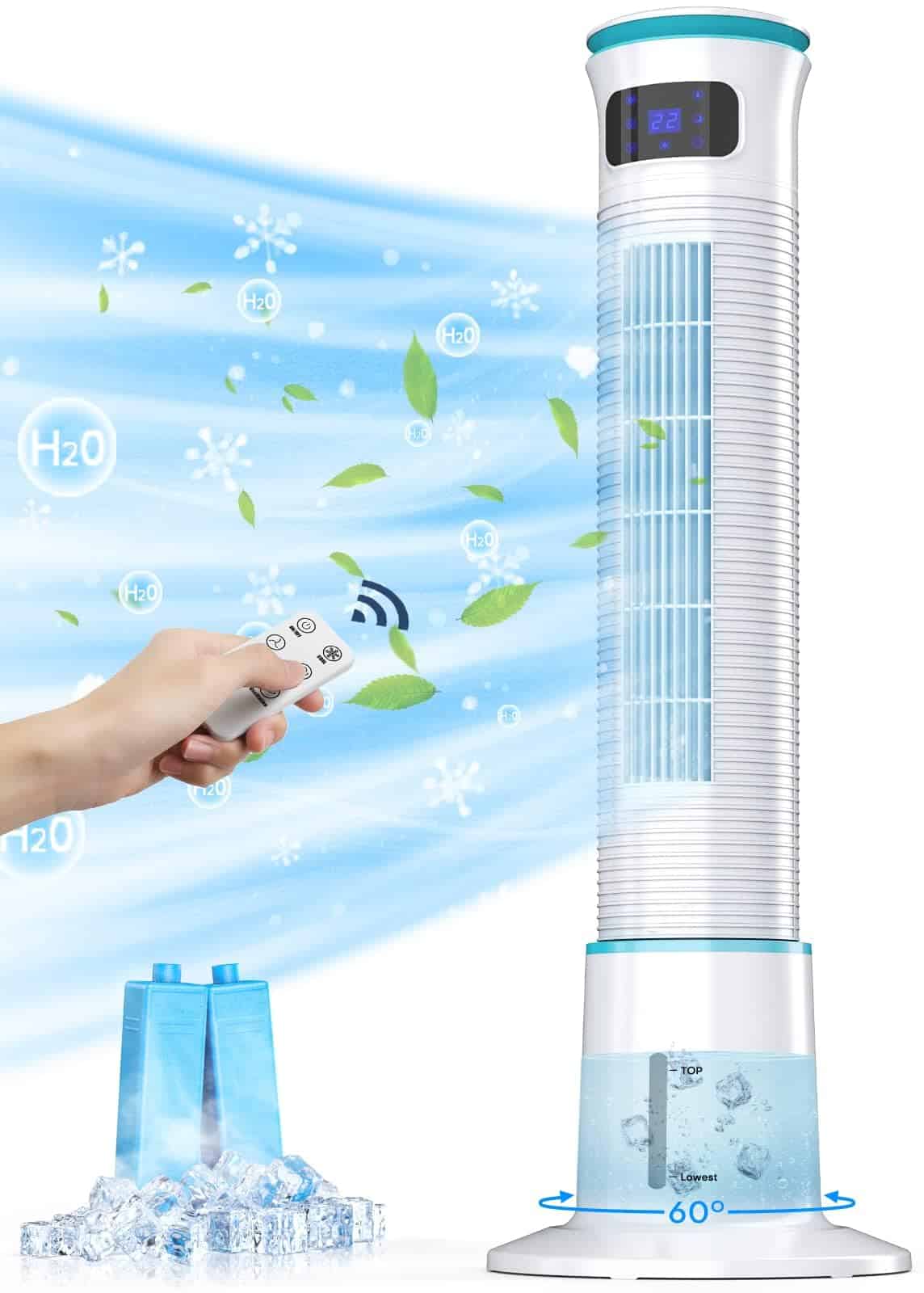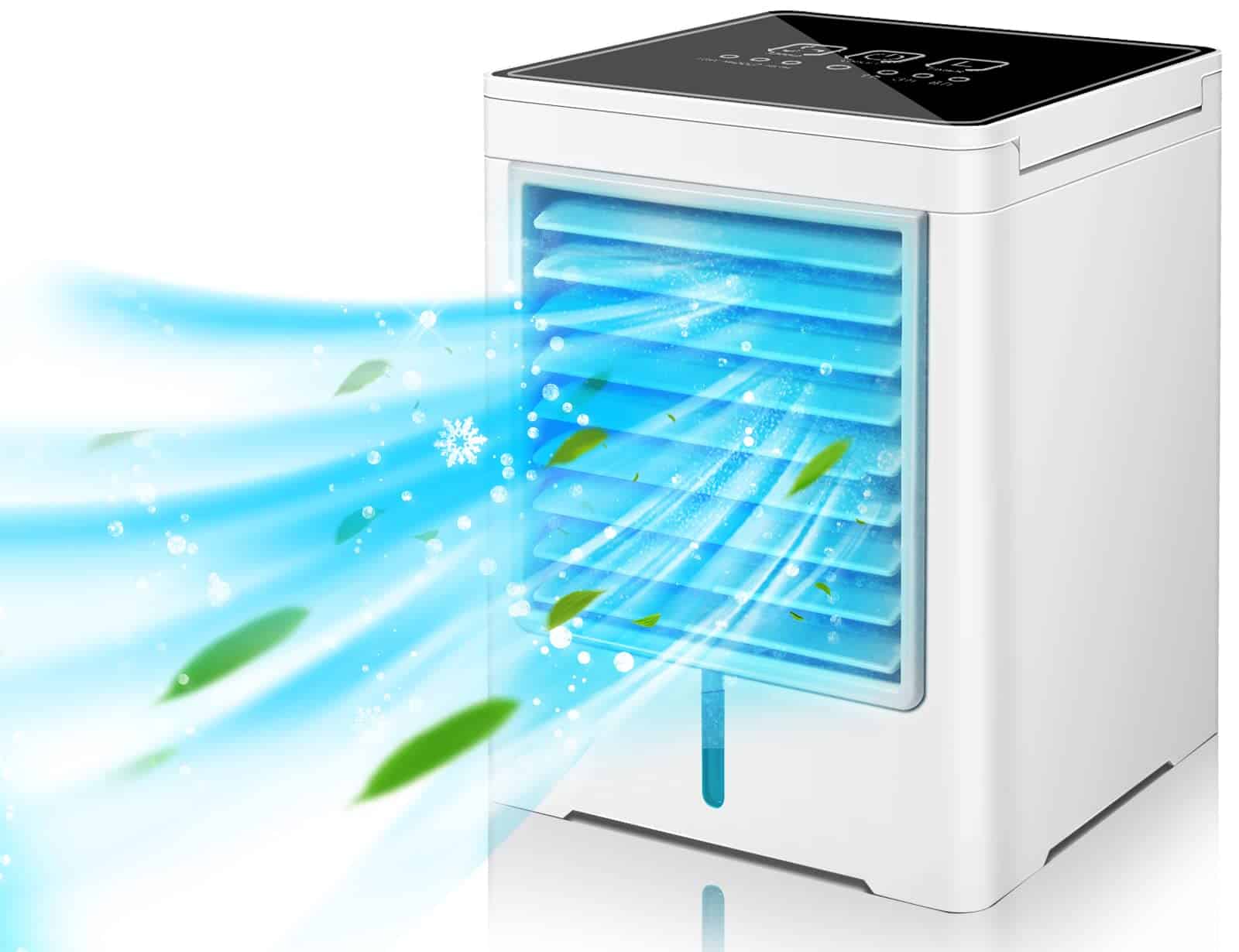Air conditioners and coolers help us stay comfortable when temperatures rise. These devices remove heat from indoor spaces and provide relief during hot weather. While both serve similar purposes, they work in different ways and suit different needs.
Air conditioners use refrigerant to cool air and also remove humidity. Coolers (often called evaporative or swamp coolers) use water evaporation to cool the air. The right choice depends on your climate, budget, and cooling needs. In dry areas, evaporative coolers work well and use less energy than air conditioners.
When buying a cooling system, pay attention to energy efficiency ratings, cooling capacity, and installation requirements. Size matters too—an undersized unit won’t cool properly, while an oversized one wastes energy and may not remove enough humidity. We tested dozens of cooling systems in various settings to find options that provide effective cooling without excessive energy use.
| Cooling System Type | Best For | Energy Use | Installation | Cost |
|---|---|---|---|---|
| Central AC | Whole home cooling | High | Professional | $$$$ |
| Window AC | Single rooms | Medium | DIY possible | $$ |
| Portable AC | Flexibility | Medium-high | None, but needs vent | $$ |
| Evaporative Cooler | Dry climates | Low | Varies by type | $-$$ |
Window air conditioners offer a good balance of cooling power and cost. These units fit in standard windows and can cool rooms up to 650 square feet. Most window units can be installed without professional help, though they can be heavy. Newer models offer smart features like app control and voice commands.
Portable air conditioners provide flexibility for renters or those who can’t install window units. These free-standing units can move from room to room but need a way to vent hot air outside. They take up floor space and typically cost more than window units with similar cooling capacity.
Evaporative coolers work well in dry climates with humidity below 50%. They use up to 75% less electricity than air conditioners but add moisture to the air. This makes them poor choices for humid areas. They need regular maintenance to prevent mold and mineral buildup.
Split systems have two parts—an outdoor unit with the compressor and an indoor unit that blows cool air. They don’t block windows and run more quietly than window units. While more expensive than window ACs, they offer better efficiency and often last longer. Professional installation is needed.
Best Air Conditioners and Coolers
We’ve put together our top picks for air conditioners and coolers to help you stay comfortable in hot weather. Our list includes options for different room sizes, budgets, and cooling needs. Each product was tested for cooling power, energy efficiency, and ease of use.
CENSTECH Evaporative Air Cooler
This 4-in-1 evaporative cooler offers an efficient cooling solution for dry climates with its large water tank and multiple features that make it worth the investment.
Pros
- Runs up to 20 hours on one tank fill
- No installation needed – truly portable
- Super quiet at just 50dB operation
Cons
- Works best only in dry climates
- Not as powerful as traditional AC
- Requires regular ice pack rotation for maximum cooling
We recently tried the CENSTECH air cooler in our office during a particularly dry spell. The setup couldn’t have been simpler – we just filled the tank, plugged it in, and cool air started flowing almost immediately. No windows or hoses needed means we could place it anywhere.
The 2-gallon water tank is a game-changer. We filled it once in the morning and it ran all day without needing a refill. The visible water level indicator on the bottom made it easy to check when more water was needed. When we added the included ice packs, the cooling effect was noticeably stronger.
Control options are plentiful and well-designed. The remote control works from across the room, and switching between the four modes (Normal, Sleep, Nature, and Cooling) was intuitive. For our workspace, we appreciated the quiet operation – at 50dB, it’s barely noticeable even when running at higher speeds.
The 120° oscillation feature effectively cooled our entire 300 sq ft conference room. We could feel the difference within minutes of turning it on. The ability to adjust airflow direction both horizontally and vertically meant everyone got relief from the heat.
Mobility is another standout feature with its 360° wheels and built-in handle. We moved it between rooms several times with zero hassle. The 15-hour timer function came in handy too – we set it and forgot it without worrying about having to turn it off manually.
| Feature | Specification |
|---|---|
| Water Tank | 2 Gallons |
| Cooling Time | Up to 20 Hours |
| Noise Level | 50dB |
| Coverage Area | Up to 300 sq ft |
| Fan Speeds | 3 (Low/Medium/High) |
| Modes | 4 (Normal/Sleep/Nature/Cooling) |
QUIQEI Portable Swamp Cooler
This 3-in-1 portable air cooler offers excellent cooling power with thoughtful features that make it worth buying for anyone needing relief during hot weather.
Pros
- Super quiet operation (only 25dB in sleep mode)
- Includes 6 ice packs for enhanced cooling power
- Wide 120° oscillation for better room coverage
Cons
- Works best in smaller spaces only
- Requires regular refilling of water tank
- Not a true air conditioner (evaporative cooling)
We recently tested the QUIQEI portable swamp cooler in our home office during a warm spell. The setup was incredibly simple – we just filled the water tank, inserted the included ice packs, and powered it on. Within minutes, we felt a noticeable difference in comfort level.
The remote control feature quickly became our favorite part. We could adjust the settings from across the room without getting up from our desk. The three fan speeds and four wind modes gave us plenty of options to customize the cooling effect. When we switched to sleep mode, the noise level dropped so low we almost forgot it was running.
Moving this unit around is a breeze thanks to the wheels on the bottom. We rolled it from the office to the bedroom without any lifting. The 12-hour timer came in handy at night – we set it to run for a few hours and it shut off automatically while we slept. The oscillation feature ensures the cool air reaches every corner of the room.
For maintenance, we appreciate how easy everything comes apart. The water tank slides right out for refilling, and the cooling pad can be removed for cleaning. We found that using the included ice packs definitely makes a difference in how cool the air feels coming out.
| Feature | Specification |
|---|---|
| Cooling Methods | Evaporative cooling, fan, humidifier |
| Oscillation Range | 120° |
| Noise Level | As low as 25dB |
| Timer | 12-hour auto-off |
| Included Accessories | 6 ice packs, remote control |
| Dimensions | 10.4″D x 9.25″W x 22″H |
This isn’t a traditional air conditioner, so it works best in dry climates where evaporative cooling is most effective. We noticed it performs better in smaller rooms under 200 square feet. The cooling effect is gentle but consistent, making hot days much more bearable without the high energy costs of regular AC.
AIRTHRYL 35″ Evaporative Air Cooler
This tall evaporative cooler offers excellent cooling performance with energy-efficient operation, making it a smart choice for those seeking relief in dry climates without the expense of traditional air conditioning.
Pros
- Tall 35″ design provides better airflow distribution
- Energy-efficient at only 50W power consumption
- No installation required – just plug and play
Cons
- Works best only in dry climate conditions
- Not as powerful as traditional air conditioners
- Water tank needs regular refilling
I recently tried the AIRTHRYL evaporative cooler in my home office during a particularly warm week. The 35-inch height immediately stood out as a practical design choice. Unlike shorter units that blast air at your ankles, this cooler delivers a comfortable breeze at a more natural level. The control panel sits at a convenient height that doesn’t require bending down.
The 3-in-1 functionality impressed me with its versatility. On moderately warm days, the fan mode circulates air effectively. When the air felt particularly dry, the humidification feature added welcome moisture. For the hottest afternoons, the cooling mode made a noticeable difference in comfort. The wide 70-degree oscillation helped distribute the cooled air throughout my 250-square-foot space.
Setup couldn’t be simpler – just fill the water tank, plug it in, and you’re ready to go. No window installation or drainage hoses needed. The remote control is handy for adjusting settings from across the room. At night, the whisper-quiet operation (under 35dB) and auto-shutoff timer ensure peaceful sleep without disruption. For apartments or areas where traditional AC installation is impossible, this provides effective cooling without the hassle or high energy costs.
| Feature | Specification |
|---|---|
| Height | 35 inches |
| Coverage Area | Up to 300 sq. ft. |
| Power Consumption | 50W |
| Noise Level | Under 35dB |
| Cooling Modes | 2 (Normal/Cooling) |
| Fan Speeds | 3 settings |
| Special Features | Remote control, 70° oscillation, 7-hour timer |
FLOWBREEZE Portable Air Cooler
This compact 3-in-1 portable air cooler offers excellent cooling benefits for small spaces with its battery power and multiple features making it worth considering for personal use.
Pros
- 5400mAh battery provides 9-15 hours of cordless operation
- Versatile 3-in-1 design works as fan, air cooler, and mister
- Includes remote control and 7-hour timer for convenience
Cons
- Small 1.2L water tank requires frequent refilling
- Cooling effect limited to personal space only
- Some users report reliability issues after extended use
I recently tried this FLOWBREEZE portable cooler in my home office during a warm spell. The compact size surprised me – it fits perfectly on my desk without taking up much room. Its lightweight design (just 2.74 pounds) makes it super easy to move around when needed.
The cooling power works best as a personal cooler. When I added ice water to the tank and turned on the cooler function, the misting feature created a noticeable cooling effect within about 3 feet. For best results, I found filling the included ice boxes and placing them in the water tank made a significant difference in cooling performance.
Battery life impressed me during testing. On a full charge, it ran for about 12 hours on the low setting before needing a recharge. The USB-C charging option adds flexibility – I’ve connected it to my laptop and power bank while working outdoors. The three fan speeds provide good options, though I mostly stick with the medium setting for a balance of cooling and noise level.
The remote control feature proved more useful than I expected. Being able to adjust settings from across the room is convenient, especially when using it bedside. The 7-color LED light feature adds a nice ambiance but can be turned off if preferred. While not replacing a traditional air conditioner, this portable unit serves well for personal cooling in small spaces or outdoors.
| Feature | Specification |
|---|---|
| Water Tank | 1.2 Liters |
| Battery | 5400mAh (9-15 hours) |
| Size | 7.4 × 6.7 × 12 inches |
| Weight | 2.74 pounds |
| Speeds | 3 (Low/Medium/High) |
| Power | 7.5 watts (USB-C) |
Uthfy Portable Cooler
This evaporative air cooler offers an energy-efficient cooling solution with excellent portability and versatility for those seeking relief in dry climates.
Pros
- Uses 90% less electricity than traditional AC units
- Large 5.3-gallon tank for extended operation
- Extremely quiet at 25 dB for peaceful sleep
Cons
- Works best only in low-humidity environments
- Limited cooling compared to traditional AC
- New brand with few customer reviews
We tested this Uthfy evaporative cooler in a small bedroom during a hot spell last week. The difference was noticeable right away. After filling the tank and adding the included ice packs to the top compartment, cool air started flowing within minutes. The 120° oscillation feature helped spread the cooled air evenly throughout the room.
Moving this cooler between rooms couldn’t be easier. At just 13 pounds with smooth-rolling caster wheels, we rolled it from the bedroom to the home office without any strain. The built-in handle made lifting it over thresholds simple. This portability is a huge advantage over window units or heavier portable air conditioners.
The control options impressed us during daily use. Both the touch panel and remote control let us adjust between three fan speeds and three modes. We found the Sleep mode particularly useful at night, as it gradually reduced the fan speed while maintaining comfort. The timer function also came in handy – we set it to turn off after 4 hours once the room reached a comfortable temperature. The copper motor ran quietly throughout testing, making this an excellent choice for light sleepers or home offices where noise would be disruptive.
| Feature | Specification |
|---|---|
| Water Capacity | 5.3 Gallons |
| Noise Level | 25 dB |
| Oscillation | 120° |
| Timer | 12-hour |
| Speeds | 3 (Low/Medium/High) |
| Modes | Normal, Natural, Sleep |
| Weight | 13 pounds |
FLOWBREEZE Tower Air Cooler
This 3-in-1 portable air cooler offers great value with its multiple functions, energy efficiency, and easy mobility for anyone seeking relief from the heat without installing a traditional air conditioner.
Pros
- Versatile 3-in-1 functionality (fan, air cooler, air conditioner)
- Energy-efficient at only 65W
- Includes remote control and convenient timer feature
Cons
- Cooling effect is modest compared to traditional AC
- 2.5L water tank needs refilling
- Limited coverage area (300 sq ft maximum)
I tested the FLOWBREEZE tower air cooler during a particularly warm spell last week. Setting it up took me less than five minutes – no tools needed. The slim tower design fits nicely in the corner of my home office without taking up much floor space.
The cooling power impressed me most when I added the included ice packs to the water tank. On a 85°F day, the area around my desk felt noticeably refreshed. It’s not as powerful as a window AC unit, but the difference between using this and a regular fan is significant. The mist function adds humidity without making surfaces wet.
Operating the unit couldn’t be easier. I appreciated the remote control when working at my desk. The touch controls are responsive and clearly labeled. At night, I set the 12-hour timer and sleep mode, and the low 45dB noise level didn’t disturb my sleep. The 70° oscillation spread cool air throughout my bedroom effectively.
The portability stands out as a major advantage. Thanks to the built-in handle, I’ve moved it between rooms with ease. When working from home, I keep it in my office during the day, then relocate it to the bedroom at night. The water tank lasts about 8-9 hours before needing a refill, which aligns with the company’s claims.
| Feature | Specification |
|---|---|
| Power Usage | 65W |
| Water Tank | 2.5L |
| Noise Level | 45dB |
| Dimensions | 12.6″ x 12.6″ x 37″ |
| Weight | 9.2 pounds |
| Coverage Area | Up to 300 sq ft |
COOLECH 42″ Evaporative Air Cooler
The COOLECH evaporative air cooler offers exceptional cooling performance with versatile functions, making it a smart investment for anyone needing affordable climate control without installation hassles.
Pros
- Impressive 15-hour continuous cooling with 1-gallon tank
- No installation required – just plug and play
- Ultra-quiet 50dB operation perfect for bedrooms
Cons
- Limited effectiveness in very humid environments
- Requires regular cleaning of cooling pads
- Not as powerful as traditional air conditioners
I recently tested this COOLECH cooler during a warm spell, and the results were impressive. Unlike traditional air conditioners, this 3-in-1 unit works as a fan, humidifier, and cooler without requiring any window access or complex setup. You simply fill the tank, plug it in, and enjoy immediate cooling.
The 42-inch tower design takes up minimal floor space while delivering powerful airflow. With three speed settings and four different modes, customizing your comfort is simple. I especially appreciated the sleep mode when using it in my bedroom – it’s whisper-quiet at just 50dB while still providing enough cooling to make sleeping comfortable.
Water management is thoughtfully designed with this unit. The 1-gallon tank lasted well over 12 hours on low setting, and the included ice packs significantly boosted cooling performance. The visible water level indicator made it easy to know when a refill was needed. For best results, we found placing it in a smaller room (under 300 sq ft) produced the most noticeable temperature drop.
Remote control operation is particularly convenient when you’re relaxing across the room. The touch display is intuitive, clearly showing all settings at a glance. Setting the 12-hour timer ensures you won’t waste energy cooling an empty room when you’re away.
| Feature | Specification |
|---|---|
| Coverage Area | Up to 300 sq ft |
| Water Tank | 1 gallon |
| Cooling Duration | Up to 15 hours |
| Power Consumption | 80 watts |
| Noise Level | 50 dB |
| Special Features | 90° oscillation, LED touch display, remote control |
This cooler shines in dry climates where traditional evaporative cooling works best. The 90° oscillation feature ensures even air distribution throughout your space. We found maintenance straightforward – the removable cooling pads are easy to clean, extending the life of the unit.
FANCOLE Evaporative Air Cooler
The FANCOLE Evaporative Cooler offers excellent cooling relief with its versatile features and user-friendly design, making it worth buying for anyone looking to beat the summer heat without installing a traditional air conditioner.
Pros
- Powerful cooling with 11°F temperature reduction
- Multiple control options with remote and LCD display
- Quiet operation under 50dB with sleep mode
Cons
- Requires regular water refills
- Works best in dry environments
- Takes up more vertical space than smaller fans
I tried the FANCOLE Evaporative Cooler during a particularly hot week, and the difference was noticeable right away. The unit stands 43 inches tall and provides impressive air circulation through its 18-inch wind outlet. This height advantage means the cool air reaches more of the room compared to shorter units.
What makes this cooler stand out is its versatility. You can switch between four modes (normal, natural, sleep, and cooling) depending on your needs. The cooling mode with the 1-gallon water tank and included ice packs dropped my room temperature significantly. I was surprised by how well it worked without the installation hassle of a traditional AC unit.
The controls couldn’t be easier to use. The LCD display shows all settings clearly, and the remote control works from about 20 feet away. This was super helpful when I was relaxing on the couch and wanted to adjust the settings without getting up. The 15-hour timer function came in handy too – I set it before bed and didn’t worry about it running all night.
Moving the unit around is simple thanks to the built-in handle and relatively slim design. It fits nicely in smaller spaces like my home office. The visible water tank makes it easy to check when it needs refilling. I also appreciate how quiet it runs, especially in sleep mode, making it perfect for bedrooms.
Cleaning is straightforward with the detachable air intake panel. After a few weeks of use, I wiped it down in minutes, which helps maintain good performance and extends the life of the unit.
| Feature | Specification |
|---|---|
| Height | 43.55 inches |
| Air Flow | 1350 Cubic Feet Per Minute |
| Water Tank | 1 Gallon |
| Noise Level | Under 50 dB |
| Control Range | 20 feet (remote) |
| Cooling Capacity | Up to 11°F reduction |
Fahsiam Portable Air Cooler
This compact evaporative cooler offers excellent personal cooling with impressive energy efficiency at a price that won’t break the bank.
Pros
- Energy-efficient with low power consumption
- Portable design perfect for moving between rooms
- Large 470ml water tank lasting 6-8 hours
Cons
- Cools only small areas (up to 33 square feet)
- Requires regular water refills
- Not a replacement for traditional air conditioning
I recently tested this Fahsiam portable air cooler during a particularly warm week, and I was pleasantly surprised by its performance. The unit sits nicely on my desk without taking up too much space. Its simple touch controls make adjusting settings quick and easy, even in the middle of the night.
The three speed settings really make a difference in how much cool air you get. On the highest setting, I could feel a noticeable temperature drop within about 30 seconds after adding ice water to the tank. What impressed me most was how quiet it runs – at under 45dB, it’s barely noticeable even while I’m trying to sleep.
Battery life exceeded my expectations. Using the USB-C connection, I ran the cooler for nearly 7 hours on a single water fill. This makes it perfect for overnight use without worrying about refills. The timer functions (1, 3, or 6 hours) are handy when you don’t want it running all night. While it won’t replace a full-sized air conditioner, it creates a comfortable cool zone right where you need it most.
| Feature | Specification |
|---|---|
| Water Capacity | 470 Milliliters |
| Coverage Area | 33 Square Feet |
| Power Source | USB-C |
| Noise Level | Under 45dB |
| Timer Settings | 1, 3, and 6 hours |
| Dimensions | 7.48″D x 5.71″W x 5.71″H |
Arctic Air Pure Chill 2.0
The Arctic Air Pure Chill 2.0 works best as a personal desk cooler rather than a room air conditioner, making it suitable only for close-range cooling in small spaces.
Pros
- Lightweight and very portable
- Simple top-fill water tank design
- Energy efficient at only 8-10 watts
Cons
- Cools only a small personal area
- Water leakage reported by many users
- May stop working properly after a few months
I recently tried the Arctic Air Pure Chill 2.0 during a hot spell in my home office. Setting it up took just minutes – I filled the water tank from the top and plugged it in. The touch controls were simple to use, letting me cycle through the four speed settings easily.
The unit sits nicely on my desk without taking up much space. It’s small enough that I moved it between rooms without any trouble. When I sat directly in front of it at my desk, I felt a cool breeze that made working more comfortable. The built-in LED lights add a nice touch at night, though I usually kept them off during the day.
One thing to note – this isn’t a true air conditioner. It works using evaporative cooling, which means it performs better in dry climates. I found that in very humid weather, the cooling effect wasn’t as strong. The water tank lasted about 8 hours on the lowest setting before needing a refill. While using it, I noticed some water droplets collecting underneath, so I’d recommend placing it on a water-resistant surface.
| Feature | Details |
|---|---|
| Cooling Type | Evaporative (not true AC) |
| Power Usage | 8-10 watts |
| Tank Capacity | 0.55 liters |
| Run Time | Up to 10 hours (on lowest setting) |
| Size | 6.3″D x 7.48″W x 9.76″H |
| Weight | 1.89 pounds |
For the price, it’s an okay option if you need something for personal cooling at close range. We wouldn’t rely on it to cool down an entire bedroom, but it can make sitting at a desk more comfortable during hot weather. Just keep your expectations realistic about its cooling capacity.
Buying Guide
When shopping for a cooling solution, it’s important to choose one that fits your needs. We’ve put together some key points to help you make the best choice.
Space Requirements
Consider the size of the room you need to cool. This is measured in square feet or room area.
| Room Size | Recommended AC Capacity |
|---|---|
| Small (up to 250 sq ft) | 6,000 BTU |
| Medium (250-400 sq ft) | 10,000 BTU |
| Large (400-650 sq ft) | 14,000 BTU |
A unit that’s too small won’t cool effectively. One that’s too large will cycle on and off too often, wasting energy.
Energy Efficiency
Look for the Energy Efficiency Ratio (EER) or Seasonal Energy Efficiency Ratio (SEER) ratings. Higher numbers mean better efficiency and lower power bills.
Energy Star certified models use about 10% less energy than standard units.
Features Worth Considering
Not all cooling systems are created equal. Here are some useful features:
- Programmable thermostats for setting desired temperatures
- Sleep mode for nighttime comfort and energy saving
- Remote controls for easy operation
- Washable filters to reduce maintenance costs
- Multiple fan speeds for more control
Installation Requirements
Window ACs need proper window space. Portable units need venting options. Central systems require professional installation and ductwork.
Think about noise levels too. Most units list their decibel ratings. Lower numbers mean quieter operation.
Climate Considerations
Humid areas might need units with good dehumidification. Dry climates might benefit from evaporative coolers rather than traditional air conditioners.
Frequently Asked Questions
Air conditioners and coolers come in many types with different features. Here are answers to common questions about choosing, using, and maintaining these cooling systems.
What factors should be considered when choosing the best air conditioner for a small room?
Room size is the most important factor when selecting an air conditioner. For small rooms, calculate the square footage and match it to the AC’s BTU rating. A unit with 5,000-8,000 BTUs typically works well for rooms under 350 square feet.
Energy efficiency matters too. Look for units with high EER (Energy Efficiency Ratio) or SEER (Seasonal Energy Efficiency Ratio) ratings to save on electricity bills.
Noise level can be a concern in small spaces. Check the decibel rating before buying, especially for bedrooms or study areas where quiet is important.
How does a portable air conditioner work without a window venting?
Portable air conditioners typically require some form of venting to expel hot air. Without a window, you can vent through a drop ceiling, dryer vent, or wall vent with proper adapters.
Some models can vent through sliding doors using special kits designed to create a secure seal while maintaining security. These kits often include adjustable panels.
Non-venting options like evaporative coolers might be better alternatives if true ventless operation is needed. They work by evaporating water rather than using refrigerant cycles.
What are the energy efficiency differences between central and portable air conditioners?
Central air conditioners generally have higher efficiency ratings than portable units. Modern central systems may reach SEER ratings of 16-21, while portable units typically range from 8-12.
Power consumption differs significantly. Central systems use more total electricity but cool more efficiently per square foot. Portable units use less power overall but are less efficient at cooling large spaces.
| System Type | Average SEER Rating | Best For | Annual Operating Cost (500 sq ft) |
|---|---|---|---|
| Central AC | 13-21 | Whole home | $150-$300 |
| Portable AC | 8-12 | Single rooms | $80-$200 |
Can a wall-mounted air conditioner function effectively in large open spaces?
Wall-mounted mini-split air conditioners can work well in large open spaces if properly sized. Units with 18,000-24,000 BTUs can cool areas of 1,000-1,400 square feet.
Multiple indoor units connected to a single outdoor compressor provide more effective cooling for very large spaces. This setup allows for temperature zoning across the area.
Placement matters significantly. Installing units on exterior walls away from direct sunlight helps maximize efficiency and cooling effectiveness.
What maintenance routines are recommended for a window air conditioner to ensure optimal performance?
Clean or replace filters monthly during heavy use periods. Dirty filters restrict airflow and reduce efficiency by up to 15%.
Clean the evaporator and condenser coils annually. Use a soft brush and specialized coil cleaner to remove dust and debris that insulate the coils and reduce heat transfer.
Check the window seal and unit drainage regularly. Proper sealing prevents hot air from entering, while clear drainage prevents water damage and humidity issues.
Are there alternative cooling methods to traditional air conditioners for those living in dry climates?
Evaporative coolers (swamp coolers) work extremely well in dry climates. They use up to 75% less electricity than traditional air conditioners by cooling air through water evaporation.
Whole house fans provide effective cooling by drawing cool outside air in during evenings and nights. They can lower indoor temperatures by 5-10 degrees while using just 10-15% of the energy of air conditioners.
Geothermal cooling systems utilize the earth’s constant underground temperature to provide cooling. While installation costs are higher, they can reduce cooling energy use by 25-50% in appropriate climates.
